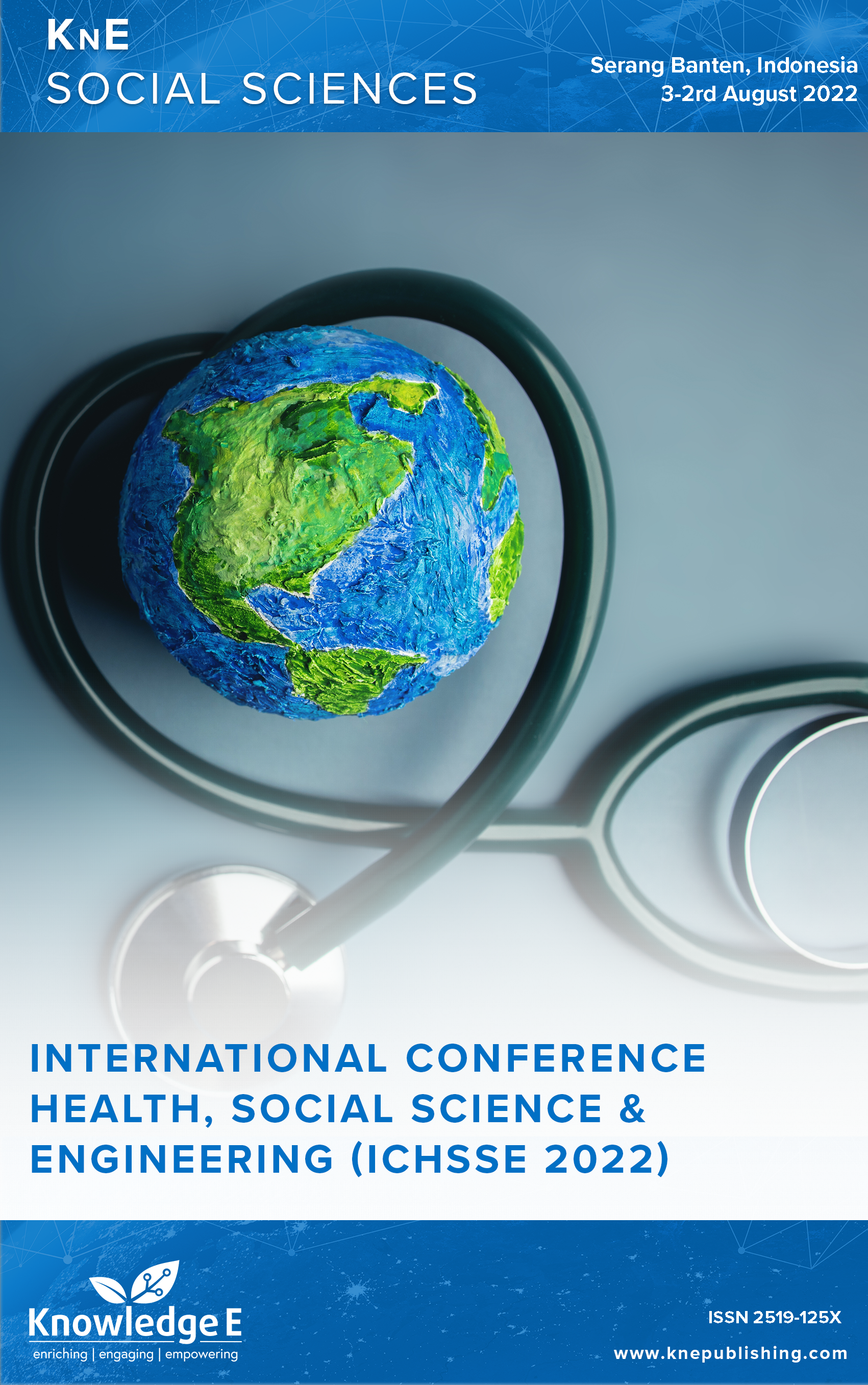Socio-cultural Influence on Lifestyle of Prediabetes Causes T2DM in Ethnic Society in South Sulawesi Province
DOI:
https://doi.org/10.18502/kss.v8i14.13841Abstract
Cases of diabetes mellitus (DM) in the world are increasing, Indonesia ranks fourth after India, China, and America. The most common DM is type 2 DM (T2DM), which is about 90%. The incidence of T2DM is caused by people’s lifestyles, which are influenced by socio-cultural factors. The highest risk of suffering from T2DM is prediabetes, which is a condition where a person’s blood glucose level is higher than normal but not high enough to be categorized as T2DM. This study aims to determine the socio-cultural influence on the lifestyle of prediabetes causing T2DM in the Bugis, Makassar, and Toraja tribes in South Sulawesi Province. The research design is qualitative with the rapid assessment procedure method. The population were prediabetics from biomedical samples in 7 regencies of South Sulawesi Province at the time of Riskesdas 2013. The samples were residents who are still prediabetes and T2DM in Jeneponto Regency (Makassar Tribe), Pare-Pare City (Bugis Tribe), and Tana Toraja Regency (Toraja Tribe). Information collection was carried out in 2017 through focus group discussions with two groups, non T2DM and T2DM. In-depth interviews with health program managers at the health office, puskesmas officers, health cadres, and community leaders. The study explains that there is a socio-cultural influence of prediabetes, ethnic groups in South Sulawesi Province in shaping the lifestyle that causes T2DM. Socio-cultural influences are the use of vehicles and the habit of doing activities in the Bugis, Makassar, and Toraja tribes. The perception of obesity in the Bugis and Makassar tribes and the habit of consuming alcohol in the Toraja tribe
Keywords: T2DM, socio-cultural, Bugis, Makassar, and Toraja
References
[2] Leger E. Prevalence of diabetes in African-American communities: Risk factors and prevention as a social disease. 2010.
[3] Tuso P. Prediabetes and lifestyle modification: Time to prevent a preventable disease. Perm J. 2014;18(3):88–93.
[4] WHO. 1999. Definition, diagnosis and classification of diabetes mellitus and its complication. Geneva.
[5] Perkeni. Pedoman Pengelolaan dan Pencegahan Diabetes Melitus Tipe2 Dewasa di Indonesia. 2021;1:5.
[6] Huxley R. India: Obesitas and diabetes mellitus. In Epidemiology of Diabetes Mellitus; 2008. pp. 57–59.
[7] Kementerian Kesehatan RI. Riset Kesehatan Dasar (RISKESDAS) 2018. Laporan Nasional 2018, hal.1–384. 2018
[8] Hackworth N, Moore SM, Hardie E, Critchley C, Buzwell S, Crafti N, et al. A risk factor profile for pre-diabetes: Biochemical, behavioural, psychosocial and cultural factors. E-J Applied Psychol. 2007;3(2):14-26.
[9] Garber AJ, Handelsman Y, Einhorn D, Bergman DA, Bloomgarden ZT, Fonseca V, et al. Diagnosis and management of prediabetes in the continuum of hyperglycemia: When do the risks of diabetes begin? A consensus statement from the American College of Endocrinology and the American Association of Clinical Endocrinologists. Endocr Pract. 2008 Oct;14(7):933–946.
[10] Geiss LS, James C, Gregg EW, Albright A, Williamson DF, Cowie CC. Diabetes risk reduction behaviors among U.S. adults with prediabetes. Am J Prev Med. 2010 Apr;38(4):403–409.
[11] Ghosh H. Urban reality of type 2 diabetes among first nations of Eastern Ontario : Western science and indigenous perceptions 1. J Global Citizen Equity Educ. 2012;2(2).
[12] Millar K, Dean HJ. Developmental origins of type 2 diabetes in aboriginal youth in Canada: It is more than diet and exercise. J Nutr Metab. 2012;2012:127452.
[13] Bertram RM. Interventions in pre-diabetes to prevent the onset of diabetes. 2008;3:1–14.
[14] Mattulada. Informasi Mengenai Diri Kita, Kapita Selecta Sejarah dan kebudayaan Sulsel, Ujung Pandang: Hasanuddin University Press; 1999.
[15] Fajriyah NF, Sudiana K, Wahyuni ED. The effects from physical exercise on the blood glucose levels, HbA1c and quality of life of Type 2 diabetes mellitus patients: A systematic review. J Ners. 2020;15(2):488–490.
[16] Chan J, C. Epidemiology of diabetes mellitus in China. In the epidemiologi of diabetes mellitus. Jonh Wiley & Sons. LTD; 2011.
[17] American Diabetes Association. Position statement: Standard of medical care in diabetes. 2010;3(suppl.1).
[18] Al-Goblan AS, Al-Alfi MA, Khan MZ. Mechanism linking diabetes mellitus and obesity. Diabetes Metab Syndr Obes. 2014 Dec;7:587–591.
[19] Carlsson S, Hammar N, Grill V. Alcohol consumption and type 2 diabetes metaanalysis of epidemiological studies indicates a U-shaped relationship. Diabetologia. 2005 Jun;48(6):1051–1054.
[20] Alexel V, Carolina R. Alcohol Consumption and its relationship to diabetesmellitus: Friend or Foe?: MedCrave: Endocrinol dan Metabol Int J. 2018;6(1):3-4

